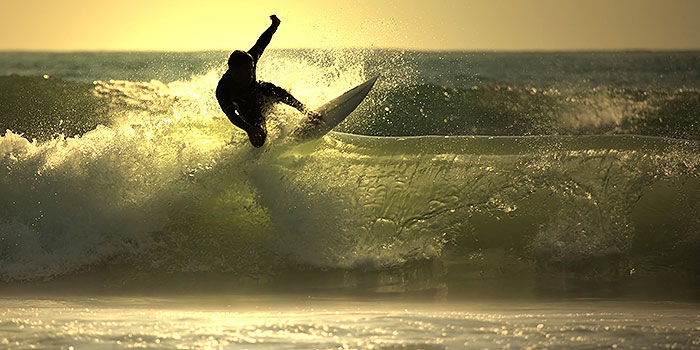



History Of Surfing
- ArticlesandContent.com (CIRCA 2005)
- /
- Oct 8, 2021 (written 2005)
The history of surfing stems from Polynesian cultures. Anthropologists still do not know where the history of surfing begins before it appeared in the Polynesian culture.
The history of surfing is somewhat ambiguous; while it can be traced back to the Hawaiian cultures and natives, a question remains as to how the Hawaiians learned of surfing and how they mastered it. The history of surfing illustrates that surfing had reached a peak in popularity with the Hawaiians, followed by nearly fifteen decades of a decline in the sport. Later, as time passed, surfing once again became a popular pastime.
Early History of Surfing
The history of surfing stems from Polynesian cultures. Anthropologists still do not know where the history of surfing begins before it appeared in the Polynesian culture. When Captain James Cook made his third voyage on the Pacific Ocean as he and his crew travelled from Tahiti to the Northwestern coastline of North America, he recorded his first encounter with Hawaiians in the late 1770s. Later, Cook returned to the islands and stopped at the Kealakekua Bay in Hawaii. After having one of their boats stolen, Cook was killed by the natives when he kidnapped the Hawaiians’ High Chief in an effort to force their hand and to cause them to return the stolen vessel.
Following Cook’s death, Lieutenant James King became the First Lieutenant on the vessel called the Discovery. He was also left with the duty of completing Captain Cook’s journals. In Cook’s journals, James King dedicated two pages to the act of describing the practice of surfboarding: this is the first documented recording ever created related to the sport practiced by the Kealakekua Bay locals in Hawaii. It is important to note that while this is the first recorded document ever mentioning surfing, the skill of the Hawaiian surfers made evident that the history of surfing predated its first documentation; at the time that King documented how the natives surfed, the practice was already a vital part of the Hawaiian culture.
King noted how the Hawaiians would stand or lay on long boards crafted out of hardwood; surfing was performed by commoners and chiefs as a way to establish fame and to convey mastery or skill. Surf boards were referred to as paipo boards; the term paipo literally translates as “belly.” While surfing may have begun with a surfer lying on the belly, the native Hawaiians of the time mastered the art of standing on surf boards upright and riding waves. Even ruling chiefs of the time like Kamehameha I and Kaumuali’I were famed for their amazing surfing skills.
It seems that the history of surfing declined dramatically shortly after Cook and James discovered the Hawaiians practicing the sport in the late 1790s. At the time of the arrival of the Discovery and the Resolution, surfing was widely practiced in both Hawaii and Tahiti. Once Cook’s journals were published Hawaii became a very popular travel hotspot visited by opportunities, missionaries, adventures, brigands, and captains. Later, during the 1800s the morality and ethics of Calvinists caused surfing to diminish considerably, although surfing still continued on the Hawaiian Islands. In the early 1850s, Henry T. Cheever, a Reverend, saw surfers in Maui at Lahaina and documented his sightings in the book: “Life in the Hawaiian Islands.” He defined the practice of surfing as exciting, manly, and dangerous. Later, in 1866, Mark Twain also wrote about the practice of surfing when he visited Hawaii; he even tried the pastime himself with little success. Twain documented his experiences in, “Roughing It,” written the same year. As time passed however, the practice of surfing continued to decline.
As Europeans traveled to Hawaii they dominated the Islands, the religions, the culture, and their practices. Eventually, the Hawaiian Islands were taken over by Europeans in the early 1890s. In the late 1890s, the islands became part of the United States. Surfing had seemingly become a thing of the past, with the sport only being taken up in areas like Maui, Kalehauawehe along the shore of Oahu, Kauai, and a few other Hawaiian islands.
Surfing And Its Revival
In the early 1900s, the literary icon Jack London visited Hawaii. After having established a solid career in writing and having successfully published books like “White Fang,” “Sea-Wolf,” and “The Call of the Wild,” Jack and his wife were considered celebrities when they were visiting Waikiki. There London encountered surfers and was instructed on the sport by the journalist, Alexander Hume Ford. Later, London penned, “A Royal Sport: Surfing in Waikiki”: it appeared in the Lady’s Home Companion edition in 1907 and in 1911.
One of the surfers that London encountered in Waikiki was George Freeth; he was invited to later put on a surfing demonstration in California in 1885. The demonstration earned him the moniker of the very first man to have ever surfed the waters in California. In truth however, there were at least three princes from Hawaii that had surfed in California in the Santa Cruz region prior to in the same year, and in 1835, Richard Henry Dana wrote in “Two Years Before the Mast” of crewmembers on Hawaiian vessels possibly using surfboards to go ashore in Santa Barbara.
Alexander Hume Ford campaigned for the art of surfing. In the early 1900s he asked that the Queen Emma Estate trustees dedicate a portion of land nearby the Moana Hotel in Waikiki so that canoeing and surfing pursuits could be preserved. His pursuit later led to the creation of the Hawaiian Outrigger Canoe Club in 1908. Just a bit early in 1905 Hawaiians also created the Hui Nalu Surf Club to help stir up interest in surfing. When London returned to the Islands in 1915, there were over 1200 members in the Outrigger Canoe Club and the Hui Nalu Surf Club had become a formalized organization with several hundred members.